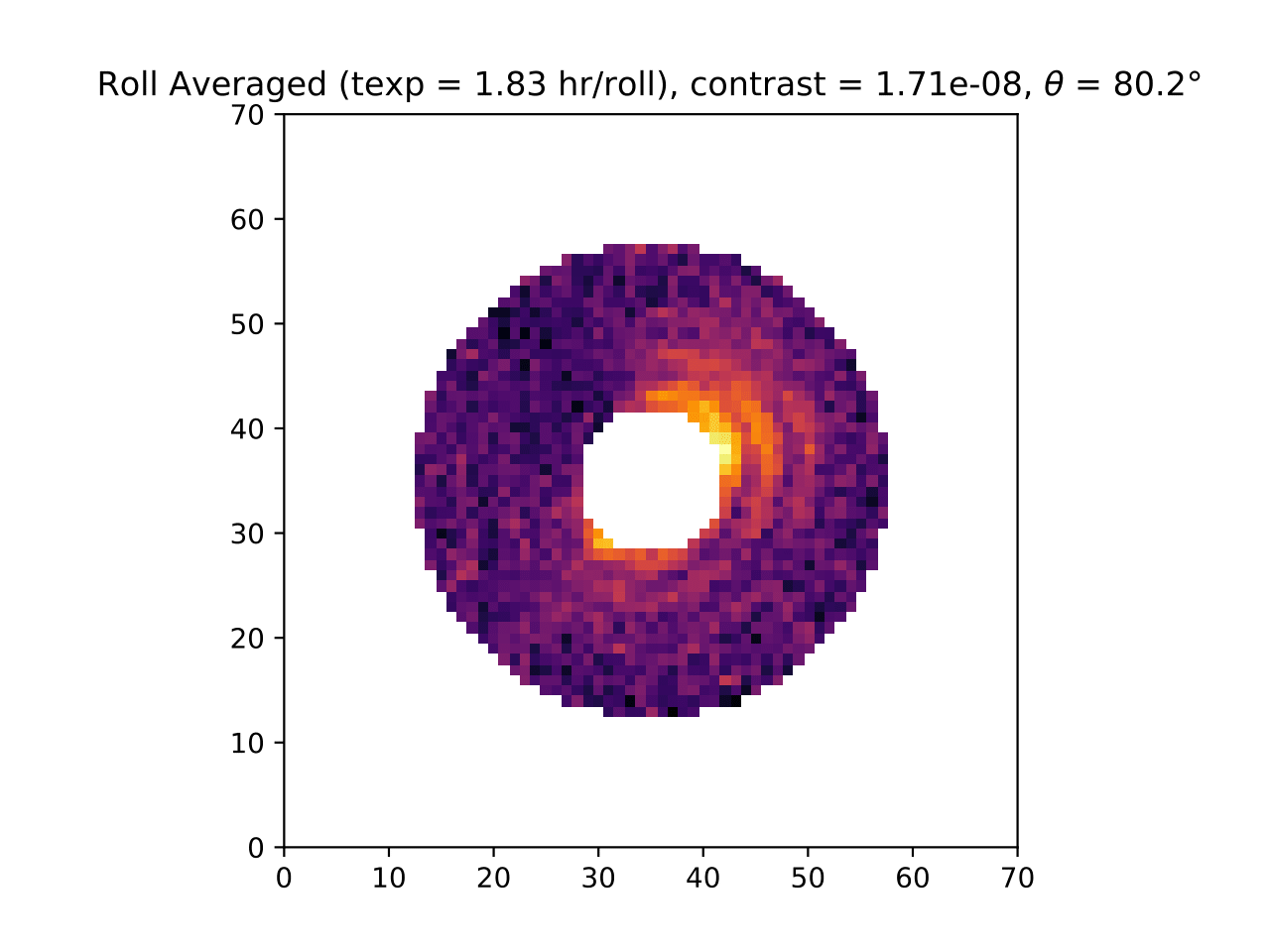WFIRST Preparatory Science Project: The Circumstellar Environments of Exoplanet Host Stars
Christine Chen's WPS Team has simulated 575-nm Coronagraph Instrument Hybrid-Lyot Coronagraph (HLC) images showing the dusty debris disks of seven known debris disk systems -- 61 Vir, eps Eri, HD 10647, HD 69830, HD 95086, HR 8799, and tau Cet -- with hypothetical Neptune- or Jupiter-mass planets injected into them. Flux estimates for these planets are determined using the geometric albedo models of Cahoy et al. (2010) . The simulations show one of these planets injected at one of five different orbital angles corresponding to one of several different separations from the host star (usually chosen from 0.8, 2.0, 5.0, and 10.0 AU). In order to use standard post-processing techniques, reference PSF images are provided and each observation is simulated at two different spacecraft roll angles. These simulations were performed using the Crispy simulator.
These data products can be used to determine the constraints that scattered light simulations place on the detectability of planets in debris disk systems, the feasibility of detecting Neptune- and Jupiter-mass planets in realistic exoplanetary systems, and the potential for further study of debris disks using Coronagraph Instrument observations.
The simulated data can be downloaded as these files 61vir.tar.gz , eps_eri.tar.gz , hd10647.tar.gz , hd69830.tar.gz , hd95086.tar.gz , hr8799.tar.gz , tau_ceti.tar.gz . Detailed information on the data products, along with further explanation of the simulation workflow, can be found in this README file . A cube-averaging checkpoint Python Notebook can be found here . The instrument parameters used in these simulations are from Cycle 6 .
